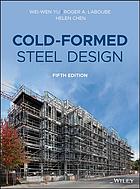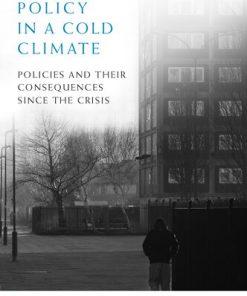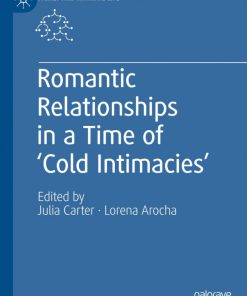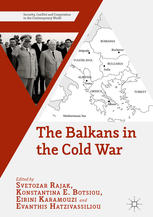Cold Climate HVAC 2018 Sustainable Buildings in Cold Climates 1st Edition by Dennis Johansson, Hans Bagge, Asa Wahlstrom ISBN 9783030006624 303000662X
$50.00 Original price was: $50.00.$25.00Current price is: $25.00.
Cold Climate HVAC 2018 Sustainable Buildings in Cold Climates 1st Edition by Dennis Johansson, Hans Bagge, Asa Wahlstrom – Ebook PDF Instant Download/Delivery: 9783030006624 ,303000662X
Full download Cold Climate HVAC 2018 Sustainable Buildings in Cold Climates 1st Edition after payment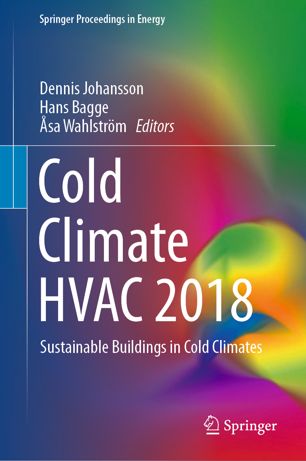
Product details:
ISBN 10: 303000662X
ISBN 13: 9783030006624
Author: Dennis Johansson, Hans Bagge, Asa Wahlstrom
Cold Climate HVAC 2018 Sustainable Buildings in Cold Climates 1st Edition Table of contents:
Part I. Energy and Power Efficiency and Low Energy Buildings
Passive House Construction Above the Arctic Circle
In Situ Thermal Resistance Testing of an Energy Efficient Building Envelope in the Canadian Arctic
Energy Consumption of an Energy Efficient Building Envelope in the Canadian Arctic
Increasing Buildings Automation Systems Efficiency with Real-Time Simulation Trough Improved Machine Self-learning Algorithms
Analysis of Various Ventilation Solutions for Residential and Non-residential Buildings in Latvia and Estonia
Performances of Gas-Water Direct-Contact Heat Transfer
Impacts of Energy Efficient Constant Output Heating on the Moisture Conditions of Unoccupied Summer Cottages in Finland
Setback Efficiency of Limited-Power Heating Systems in Cold Climate
Integration of Building Integrated Photovoltaic/Thermal (BIPV/T) System with Heat Recovery Ventilators for Improved Performance Under Extreme Cold Climates
Demand Controlled Ventilation in Residential Buildings
Is It Possible to Build Near Zero Energy Single Family Buildings in Very Cold Arctic Climate?
The Energy Performance of Green Roof in Sub-arctic Climate
Performance Evaluation of a Passive House in Sub-arctic Climate
The Study of Energy-Saving Window Technology Adaption for Green Buildings in the Severe Cold Region of Northern China
Part II. Renovation of Buildings
Tenants’ Priority of Renovation Measures and Their Willingness to Pay Higher Rent to Implement These
Upgrading of a Typical Norwegian Existing Wooden House According to the EnerPHit Standard
Adding Glazing as an Energy Saving Renovation Measure in Cold Climates
The Most Cost-Effective Energy Solution in Renovating a Multi-family House
Operational Characterisation of Neighbourhood Heat Energy After Large-Scale Building Retrofit
Potentials and Challenges for Integrating PV in Roof Renovation of Multi-residential Houses—A Questionnaire Survey
Improving the Indoor Climate and Energy Saving in Renovated Apartment Buildings in Estonia
Building Refurbishment from a Life Cycle Perspective—An Environmental Return on Investment Approach
Optimizing the Life Cycle Costs of Building Components with Regard to Energy Renovation
The Challenge of Energy Efficiency in Kiruna’s Heritage Buildings
Renovating the Housing Stock Built Before 1945: Exploring the Relations Between Energy Efficiency, Embodied Energy and Heritage Values
What Is the Minimum District Heating Supply Temperature in Residential Buildings in Norway?
An Assessment of the QUB/e Method for Fast In Situ Measurements of the Thermal Performance of Building Fabrics in Cold Climates
Part III. Efficient HVAC Components
Sol-Air Thermometer Measurement of Heat Transfer Coefficient at Building Outdoor Surfaces
What Should the Minimum Ventilation Rate Be in a Demand-Controlled Ventilation Strategy?
Dynamic Thermal Performance and Controllability of Fan Coil Systems
Evaluation Study of the Performance of Dual Core Energy Recovery System for Dwellings in the Arctic
Experimental Comparison of Performance Between Single and Dual Core Energy Recovery Ventilation Systems
Part IV. Heat Pump and Geothermal Systems
Design of Horizontal Ground Heat Exchangers in Sub-arctic Conditions—Sensitivity to Undisturbed Ground Temperatures
Artificial Neural Network Analysis of the Solar-Assisted Heat Pumps Performance for Domestic Hot Water Production
Evaluation of Two Ground Source Heat Pump Systems in Nearly Zero Energy Buildings
Cold Climate Heat Pump Using Tandem Vapor-Injection Compressors
Detailed Performance Assessment of Variable Capacity Inverter-Driven Cold Climate Air Source Heat Pumps
Utilisation of Ice Rink Waste Heat by Aid of Heat Pumps
Part V. District and City Energy Systems
Smart EV Charging Systems to Improve Energy Flexibility of Zero Emission Neighbourhoods
Hydronic Heating Pavement with Low Temperature: The Effect of Pre-heating and Fluid Temperature on Anti-icing Performance
Life City—A Climate-Conscious Concept for Smart and Sustainable Built Environment
Energy Pathways for Future Residential Building Areas in Norway
Assessing the Potential of Energy Retrofitting and Renewables in the Campus of Lund University
Part VI. Buildings in Operation
Inverse Model Identification of the Thermal Dynamics of a Norwegian Zero Emission House
Sustainable Architecture in Northern Subarctic and Artic Climate
When Buildings Become Intelligent—A Network Analysis of Building Automation, Operation and Competencies
Does the Obligatory Ventilation Control Fulfill Its Purpose?
Vertical Temperature Gradients in Apartments with Hydronic Radiator Heating
Renovation of an Office Building with Prefabricated Wooden Element—Case Hedensbyn
How to Extend the Service Life of School Buildings by Improving Their Indoor Climate Conditions?
A Net ZEB Case Study—Experiences from Freezing in Ventilation Heat Exchanger and Measured Energy Performance
Part VII. Building Simulation
Assessment of Thermal Bridging Heat Loss by Means of the Infrared Thermography Technique
An Evaluation of the Combined Effect of Window Shading and Thermal Mass to Reduce Overheating
Method for Probabilistic Energy Calculations—Passive House Case Study
Validation of a Zonal Model to Capture the Detailed Indoor Thermal Environment of a Room Heated by a Stove
Validation of TEKNOsim 6 According to CIBSE TM33
Real Time Measurement of Dynamic Metabolic Factor (D-MET)
Impacts of Common Simulation Assumptions in Sweden on Modelled Energy Balance of a Multi-family Building
A Comparison Between Four Dynamic Energy Modeling Tools for Simulation of Space Heating Demand of Buildings
Fast Simulation Platform for Retrofitting Measures in Residential Heating
Calibration of a High-Resolution Dynamic Model for Detailed Investigation of the Energy Flexibility of a Zero Emission Residential Building
Simulation of Ventilation Rates and Heat Losses during Airing in Large Single Zone Buildings in Cold Climates
User Related Input Data for Energy Usage Calculations the Case of Low Energy Schools in Sweden
Part VIII. Trans Disciplinary Connections and Social Aspects
Business Model Analysis of Geo-TABS Buildings with Predictive Control Systems
Atrium in Residential Buildings—A Design to Enhance Social Interaction in Urban Areas in Nordic Climates
Comparative Evaluation of City Dwellers’ Perspectives on Household Energy Use Based on Housing Tenure: Survey Results from Northern Sweden
Challenges in Transdisciplinary Research—Example from a Study on People as Part of Energy and Ventilation Systems in Residential Buildings (PEIRE)
Part IX. Indoor Environment and Health
Assessment of Indoor Air Quality and Hygrothermal Conditions of Boarders During Autumn, Winter and Spring in Two of Estonian Straw-Bale Houses
Investigating Recommended Temperature Zones and Clothing Assumptions in the Assessment of Classrooms’ Thermal Environment
Indoor Temperature Variations in Swedish Households: Implications for Thermal Comfort
Wood as an Exposed Building Material for Indoor Climate Adaptation
Black Carbon Concentrations Inside and Outside Occupied Residences
Should We Differentiate Ventilation Requirements for Different User Groups?
Influence of the Thermal Environment of a Bathroom After Renovation on Blood Pressure of Residents
Assessment of the Effects of Using Wood Stoves on Indoor Air Quality in Two Types of Norwegian Houses
How Does Low Relative Humidity Affect Perceived Air Quality, Thermal Comfort and Symptoms in Modern Office Buildings in Cold Climates?
Effect of Filter Type in Ventilation Systems on NO2 Concentrations in Classrooms
Part X. Moisture Safety and Hygrothermal Aspects
Determination of Maximum Moisture Zone on Enclosing Structures
Moisture Safety of Tall Timber Facades—LCA and LCC Calculations of Damage Scenarios
Determination of Clay-Sand Plaster Hygrothermal Performance: Influence of Different Types of Clays on Sorption and Water Vapour Permeability
Hygrothermal Performance of Timber External Walls Insulated with Natural and Industrial Materials
Part XI. Codes, Regulations, Standards and Policies
Needs of Support for Swedish Property Owners to Implement More Energy-Efficiency Improvements During Renovations
Criteria for Sustainable Buildings in Sweden
Normalisation of Measured Energy Use in Buildings—Need for a Review of the Swedish Regulations
Environmental Sustainability Building Criteria for an Open Classification System
Part XII. Other Aspects of Buildings in Cold Climates
Sensitivity Analysis of Melting and Freezing of Snow on Roofs
The Method of Determining Climatic Loads on the Enclosing Structures Taking into Account Global Climate Change
Review of Current Practice of Building Foundations in the Canadian North
Creating State of the Art? A Passive House University Hospital North of the Polar Circle
Mixing Hot and Cold: Fiery Soul Architects Creating Sustainable Buildings in the Arctic
Communicating the Acoustic Performance of Innovative HVAC Solutions
People also search for Cold Climate HVAC 2018 Sustainable Buildings in Cold Climates 1st Edition:
cold climate building techniques
cold climate house design
sustainable hvac systems in commercial buildings
hvac sustainable design
Tags:
Dennis Johansson,Hans Bagge,Asa Wahlstrom,Cold Climate,Sustainable Buildings
You may also like…
Politics & Philosophy - Social Sciences
Autocratization in post-Cold War Political Regimes Andrea Cassani
Engineering
Architects & Photographers
Life in a Cold Climate Nancy Mitford The Biography First Pegasus Books Hardcover Edition Mitford
Poetry - American Poetry
Ambiguous Borderlands Shadow Imagery in Cold War American Culture Erik Mortenson
Uncategorized
Politics & Philosophy - Social Sciences
Politics & Philosophy
Romantic Relationships in a Time of ‘Cold Intimacies’ Julia Carter
Politics & Philosophy






